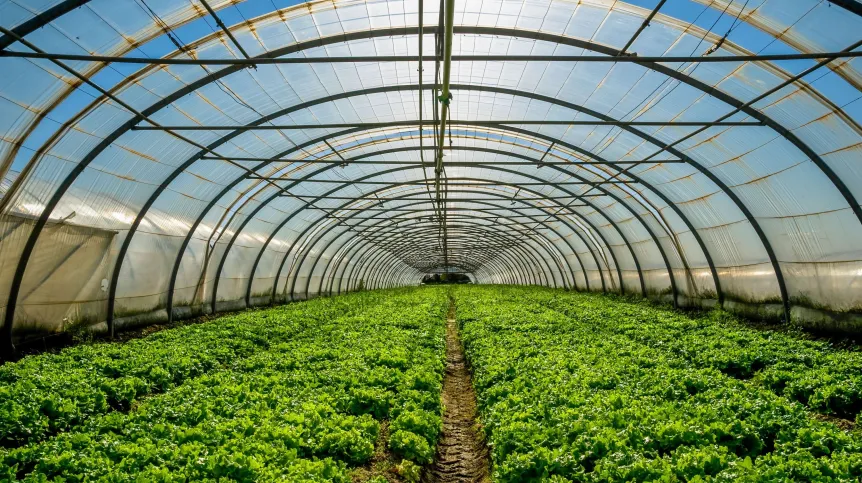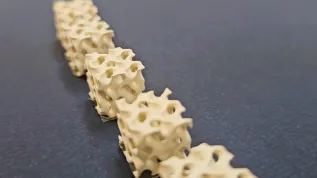
Scientists from the Jagiellonian University have developed a new type of fertilizer for wide use in vascular plant cultivation. The fertilizer combines chemical compounds important for plants with a selected strain of endophytic yeast.
Representatives of the Centre for Technology Transfer CITTRU at the Jagiellonian University report that the use of this product by farmers could help restore microbiological balance to soils and reduce the burden on the natural environment.
The fertilizer was developed at the university’s Institute of Environmental Sciences. Professor Katarzyna Turnau's team has discovered that if compounds rich in elements key to the proper development of plants (including nitrogen, potassium, phosphorus, sodium, calcium) are combined in the right proportions, a colloid composed of nanoparticles will spontaneously form in such a mixture. These nanoparticles are about 100 nm in diameter and are not soluble in water. These features mean that the composition ensures an optimal rate of release of the elements and minerals needed by plants into the soil. Instead of all at once, the fertilizer is released into the substrate gradually, which increases its effectiveness.
'When we use particles of the right size in fertilization, we obtain greater fertilization efficiency compared to traditionally used preparations that reach the soil in the form of ions. Such fertilizers have a relatively short effect, which makes them ineffective, expensive, and very burdensome for the environment', says Professor Turnau.
She adds that a big problem is that traditional fertilizers are only absorbed by plants to a small extent; most of them simply permeate groundwater or flow into surface waters after heavy rainfall. 'Despite this, excessive amounts of ineffective fertilizers are still used in agriculture, and their negative effects are accepted. These are, of course, high costs, the need for more frequent spraying and, very importantly, a downright disastrous impact on the natural environment', she adds.
However, if, as in the case of the new fertilizer, minerals are delivered to the soil in a form that allows them to be released slowly, plants can use much more of the substances, and less of them are wasted. This brings many benefits, the most important of which is that much less of the preparation is needed to achieve the desired effect, and at the same time it can be delivered less often. Consequently, chemical and microbiological support for crops can be cheaper, and the fertilizer has a less negative impact on the environment.
'During our research, we have proven that the composition of minerals we have developed in the form of nanoparticles is subject to very little leaching. More specifically: about a dozen times slower compared to the rate at which minerals supplied in commonly used fertilizers are leached from the soil. This means that the fertilizer in the form of particles of the right size can support plants for a much longer period and will not end up in groundwater or surface water', explains the co-author of the new technology, Professor Szczepan Zapotoczny from the Faculty of Chemistry at the Jagiellonian University.
To make the fertilizer more effective, the scientists supplemented it with a selected strain of endophytic yeast. It plays a dual role. Firstly, it stimulates plants to develop mycorrhiza with fungal hyphae present in the soil. Fungi, in turn, make it easier for plants to obtain compounds necessary for growth from the substrate.
Secondly, due to the production of significant amounts of polysaccharides, yeast constitutes a kind of underground reservoir of water that can serve plants during periods of low precipitation.
'Agriculture is increasingly struggling with weather anomalies. One of them is drought and systematically rising average temperatures. This, of course, is not conducive to plant cultivation, which is why water retention within root systems is crucial for the efficiency of agriculture. The presence of yeast makes it easier for plants to survive periods of drought. In addition, when rainwater enter the soil after a drought, plants supported by yeast recover much faster and later grow in much better condition', says Professor Zapotoczny.
Professor Turnau adds that the phenomenon of mycorrhiza and its role in modern agriculture is hard to overestimate. 'Its absence weakens crops and at the same time lowers the microbiological quality of soils. As a result, food producers and plant cultivators are forced to use increasing amounts of fertilizers. This, in turn, weakens the genes in plants that stimulate the development of mycorrhiza. This vicious circle is difficult to escape today. We want to have effective food production and this is understandable, but one of the main challenges for agriculture is also sustainable development and care for food to be healthy, and plants to come from soils rich in microorganisms. Healthy soil means healthy food’, she says.
The yeast used in the fertilizer was isolated from ribwort plantain growing copper heaps in Norway. After years of research, it was found that this strain provided maximum protection for plants and helped them survive difficult conditions.
In addition to it effectively 'encouraging' plants to form mycorrhiza with fungi, the yeast also makes crops more aromatic. 'A very interesting phenomenon occurs in the formation of mycorrhiza. When the fungus begins to overgrow the plant, it triggers a number of processes in it, including certain defence processes. These cause the plant to emit various types of aromas. When we deal with plants such as mint or basil, we can clearly feel that cultivation with mycorrhiza causes the plants to have a stronger scent and taste better. Using the preparation we have developed, we can therefore not only restore the microbiological balance in the soil, but also obtain more aromatic plants’, Professor Turnau says.
According to its creators, the new fertilizer is suitable for use in industrial agriculture, greenhouse crops, horticulture, and in organic farming. It can work particularly well for herbs, tomatoes, cereals, berry plants (strawberries, blackberries, chokeberries), and fruit trees (pear and apple trees). Its effect will be smaller for non-mycorrhizal plants, but fertilization with such a preparation will still be beneficial for them due to improved water availability during periods of drought.
Since the preparation consists of readily available ingredients, and the used strain can be multiplied on an industrial scale without restrictions, the fertilizer is expected to be quite cheap. The researchers from the Jagiellonian University are now working on implementing it for general use. (PAP)
Katarzyna Czechowicz
kap/ zan/
tr. RL













